Showing Spotlights 105 - 112 of 318 in category All (newest first):
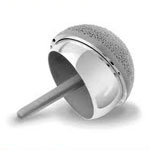 Imagine intelligent medical implants that can continuously monitor their condition inside the body and autonomously respond to changes such as infection by releasing anti-inflammatory agents. Thanks to nanotechnology, medical research is moving quickly towards this goal. A new study shows that the use of polypyrrole films as electrically controlled drug release devices on implant surfaces can potentially improve bone implants. By electrodepositing antibiotics or anti-inflammatory drugs in a polymer coating on medical devices, researchers demonstrate that such drugs can be released from polypyrrole on demand - by applying a voltage - and control cellular behavior important for orthopedic applications, i.e. inhibit inflammation and kill bacteria.
Imagine intelligent medical implants that can continuously monitor their condition inside the body and autonomously respond to changes such as infection by releasing anti-inflammatory agents. Thanks to nanotechnology, medical research is moving quickly towards this goal. A new study shows that the use of polypyrrole films as electrically controlled drug release devices on implant surfaces can potentially improve bone implants. By electrodepositing antibiotics or anti-inflammatory drugs in a polymer coating on medical devices, researchers demonstrate that such drugs can be released from polypyrrole on demand - by applying a voltage - and control cellular behavior important for orthopedic applications, i.e. inhibit inflammation and kill bacteria.
Jan 25th, 2011
 Ranging from electronic gadgets to medical applications, many nanomaterial-based devices have appeared in the market. One of the most important issues for these devices is their reliability and life-time of operation. A vital factor behind these issues is the structural stability of the nano-device - debonding of the nanomaterial from the substrate material being the single largest contribution for device degradation. In order to improve bonding between nanomaterials and their substrate, it is essential to understand and quantify the bonding mechanisms. A new nano-scratch technique developed by researchers in the U.S. could serve as the basis for a reliable quantification technique for interpreting nanomaterial-substrate bond strength.
Ranging from electronic gadgets to medical applications, many nanomaterial-based devices have appeared in the market. One of the most important issues for these devices is their reliability and life-time of operation. A vital factor behind these issues is the structural stability of the nano-device - debonding of the nanomaterial from the substrate material being the single largest contribution for device degradation. In order to improve bonding between nanomaterials and their substrate, it is essential to understand and quantify the bonding mechanisms. A new nano-scratch technique developed by researchers in the U.S. could serve as the basis for a reliable quantification technique for interpreting nanomaterial-substrate bond strength.
Jan 14th, 2011
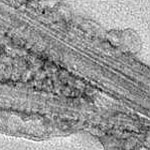 The toxicity issues surrounding carbon nanotubes (CNTs) are highly relevant for two reasons: Firstly, as more and more products containing CNTs come to market, there is a chance that free CNTs get released during their life cycles, most likely during production or disposal, and find their way through the environment into the body. Secondly, and much more pertinent with regard to potential health risks, is the use of CNTs in biological and medical settings. Some groups are using CNTs in research for vaccination as well as gene and cancer therapy. Here, the CNT applications are designed to interact directly with the immune system. Understanding the interplay between CNTs and immune proteins is therefore critical for both improving CNT applications in biology and medicine and avoiding potentially noxious immune responses.
The toxicity issues surrounding carbon nanotubes (CNTs) are highly relevant for two reasons: Firstly, as more and more products containing CNTs come to market, there is a chance that free CNTs get released during their life cycles, most likely during production or disposal, and find their way through the environment into the body. Secondly, and much more pertinent with regard to potential health risks, is the use of CNTs in biological and medical settings. Some groups are using CNTs in research for vaccination as well as gene and cancer therapy. Here, the CNT applications are designed to interact directly with the immune system. Understanding the interplay between CNTs and immune proteins is therefore critical for both improving CNT applications in biology and medicine and avoiding potentially noxious immune responses.
Jan 13th, 2011
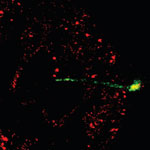 With the advance of nanomedicine, bio-nanotechnology, and molecular biology, researchers require tools that allow them to work on a single cell level. These tools are required to probe individual cells, monitor their processes, and control/alter their functions through nanosurgery procedures and injection of drugs, DNA etc. - all without damaging the cells, of course. Researchers have now developed a multifunctional endoscope-like device, using individual CNTs for prolonged intracellular probing at the single-organelle level, without any recordable disturbance to the metabolism of the cell. These endoscopes can transport attoliter volumes of fluid, record picoampere signals from cells, and can be manipulated magnetically. Furthermore, the tip deflects with submicrometer resolution, and the attachment of gold nanoparticles allows intracellular fingerprinting using surface-enhanced Raman spectroscopy (SERS).
With the advance of nanomedicine, bio-nanotechnology, and molecular biology, researchers require tools that allow them to work on a single cell level. These tools are required to probe individual cells, monitor their processes, and control/alter their functions through nanosurgery procedures and injection of drugs, DNA etc. - all without damaging the cells, of course. Researchers have now developed a multifunctional endoscope-like device, using individual CNTs for prolonged intracellular probing at the single-organelle level, without any recordable disturbance to the metabolism of the cell. These endoscopes can transport attoliter volumes of fluid, record picoampere signals from cells, and can be manipulated magnetically. Furthermore, the tip deflects with submicrometer resolution, and the attachment of gold nanoparticles allows intracellular fingerprinting using surface-enhanced Raman spectroscopy (SERS).
Dec 15th, 2010
 Gas sensors often operate by detecting the subtle changes that deposited gas molecules make in the way electricity moves through a surface layer. One advantage that carbon nanotubes offer for gas sensors, compared to metal oxide materials, is their fast response time and the fact that they react with gases at lower temperatures, sometimes even as low as room temperature. In order for CNT-based sensors to be able to compete with state-of-the-art CMOS technology, researchers need to develop a low cost, reliable and large-scale reproducible CNT deposition process on the wafer level. Researchers in the UK have now presented a novel concept of wafer level localized growth of 'spaghetti'-like CNTs on a fully processed CMOS substrate. This is the first successful proof of concept for growing CNTs at the post CMOS wafer stage.
Gas sensors often operate by detecting the subtle changes that deposited gas molecules make in the way electricity moves through a surface layer. One advantage that carbon nanotubes offer for gas sensors, compared to metal oxide materials, is their fast response time and the fact that they react with gases at lower temperatures, sometimes even as low as room temperature. In order for CNT-based sensors to be able to compete with state-of-the-art CMOS technology, researchers need to develop a low cost, reliable and large-scale reproducible CNT deposition process on the wafer level. Researchers in the UK have now presented a novel concept of wafer level localized growth of 'spaghetti'-like CNTs on a fully processed CMOS substrate. This is the first successful proof of concept for growing CNTs at the post CMOS wafer stage.
Nov 15th, 2010
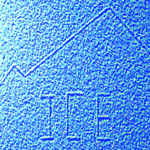 Researchers at Harvard University have shown that nanostructures can be patterned with focused electron or ion beams in thin, stable, conformal films of water ice grown on silicon. They demonstrated ice lithography as a lithographic technique for patterning e.g. metal wires down to 20 nm wide. What's interesting about this technique is that patterning with ices of any condensed gas is a straightforward and practical process. Ice resist does not require spinning or baking. All processing and patterning steps can occur in a single evacuated chamber and be monitored at high resolution. The final removal of unexposed resist leaves minimal residues. Environmentally harmful solvents are not required and complete dry removal of the ice layer can be performed by in situ sublimation. Also, ice lithography makes it possible to nanopattern chemical modifications into silicon and other substrates. The team has now reported the successful application of ice lithography to the fabrication of nanoscale devices.
Researchers at Harvard University have shown that nanostructures can be patterned with focused electron or ion beams in thin, stable, conformal films of water ice grown on silicon. They demonstrated ice lithography as a lithographic technique for patterning e.g. metal wires down to 20 nm wide. What's interesting about this technique is that patterning with ices of any condensed gas is a straightforward and practical process. Ice resist does not require spinning or baking. All processing and patterning steps can occur in a single evacuated chamber and be monitored at high resolution. The final removal of unexposed resist leaves minimal residues. Environmentally harmful solvents are not required and complete dry removal of the ice layer can be performed by in situ sublimation. Also, ice lithography makes it possible to nanopattern chemical modifications into silicon and other substrates. The team has now reported the successful application of ice lithography to the fabrication of nanoscale devices.
Nov 4th, 2010
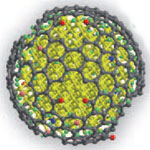 Catalytic dehydrogenation of ethylbenzene is one of the most important processes in the chemical industry world-wide. Styrene, for instance, is commonly produced using this process. The annual production of some 20 million metric tonnes of styrene is an important precursor in the plastics industry. Being able to develop a new metal-free, energy-saving, and efficient catalyst for alkane dehydrogenation would have a significant positive impact on the environment. Coke formation during the current industrial process is the main disadvantage of the metal-based catalysts now used. Steam is used as a protection agent to avoid coking and thus keep the catalysts active. The steam generation consumes massive amounts of energy. This is simply solved by using carbon as catalyst material. Even without steam, the catalyst is free from coke formation and shows long time stability. Researchers have now developed a new process for the dehydrogenation of ethylbenzene, using nanodiamonds as catalyst, that is oxygen-free and steam-free.
Catalytic dehydrogenation of ethylbenzene is one of the most important processes in the chemical industry world-wide. Styrene, for instance, is commonly produced using this process. The annual production of some 20 million metric tonnes of styrene is an important precursor in the plastics industry. Being able to develop a new metal-free, energy-saving, and efficient catalyst for alkane dehydrogenation would have a significant positive impact on the environment. Coke formation during the current industrial process is the main disadvantage of the metal-based catalysts now used. Steam is used as a protection agent to avoid coking and thus keep the catalysts active. The steam generation consumes massive amounts of energy. This is simply solved by using carbon as catalyst material. Even without steam, the catalyst is free from coke formation and shows long time stability. Researchers have now developed a new process for the dehydrogenation of ethylbenzene, using nanodiamonds as catalyst, that is oxygen-free and steam-free.
Oct 18th, 2010
 Gold-based nanostructures and carbon nanotubes have been successfully applied for photoacoustic imaging and photothermal treatment of tumors. Medical researchers believe that such nanoparticle-mediated, image-guided cancer therapy has tremendous promise for increasing the efficacy of cancer treatment while reducing toxic side effects traditionally associated with treatment. Working with a different carbon nanomaterial, researchers now have been able to show that polyhydroxy fullerenes can be utilized for the same purposes. The minute size and biocompatibility of polyhydroxy fullerenes make them particularly attractive for biomedical applications - they are water-soluble, biodegradable, antioxidant, and rapidly excreted.
Gold-based nanostructures and carbon nanotubes have been successfully applied for photoacoustic imaging and photothermal treatment of tumors. Medical researchers believe that such nanoparticle-mediated, image-guided cancer therapy has tremendous promise for increasing the efficacy of cancer treatment while reducing toxic side effects traditionally associated with treatment. Working with a different carbon nanomaterial, researchers now have been able to show that polyhydroxy fullerenes can be utilized for the same purposes. The minute size and biocompatibility of polyhydroxy fullerenes make them particularly attractive for biomedical applications - they are water-soluble, biodegradable, antioxidant, and rapidly excreted.
Sep 29th, 2010
 Imagine intelligent medical implants that can continuously monitor their condition inside the body and autonomously respond to changes such as infection by releasing anti-inflammatory agents. Thanks to nanotechnology, medical research is moving quickly towards this goal. A new study shows that the use of polypyrrole films as electrically controlled drug release devices on implant surfaces can potentially improve bone implants. By electrodepositing antibiotics or anti-inflammatory drugs in a polymer coating on medical devices, researchers demonstrate that such drugs can be released from polypyrrole on demand - by applying a voltage - and control cellular behavior important for orthopedic applications, i.e. inhibit inflammation and kill bacteria.
Imagine intelligent medical implants that can continuously monitor their condition inside the body and autonomously respond to changes such as infection by releasing anti-inflammatory agents. Thanks to nanotechnology, medical research is moving quickly towards this goal. A new study shows that the use of polypyrrole films as electrically controlled drug release devices on implant surfaces can potentially improve bone implants. By electrodepositing antibiotics or anti-inflammatory drugs in a polymer coating on medical devices, researchers demonstrate that such drugs can be released from polypyrrole on demand - by applying a voltage - and control cellular behavior important for orthopedic applications, i.e. inhibit inflammation and kill bacteria.
 Subscribe to our Nanotechnology Spotlight feed
Subscribe to our Nanotechnology Spotlight feed





